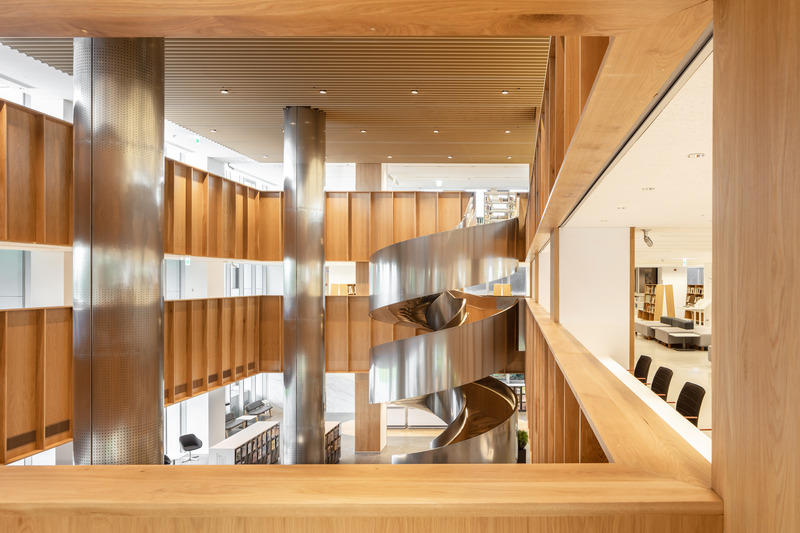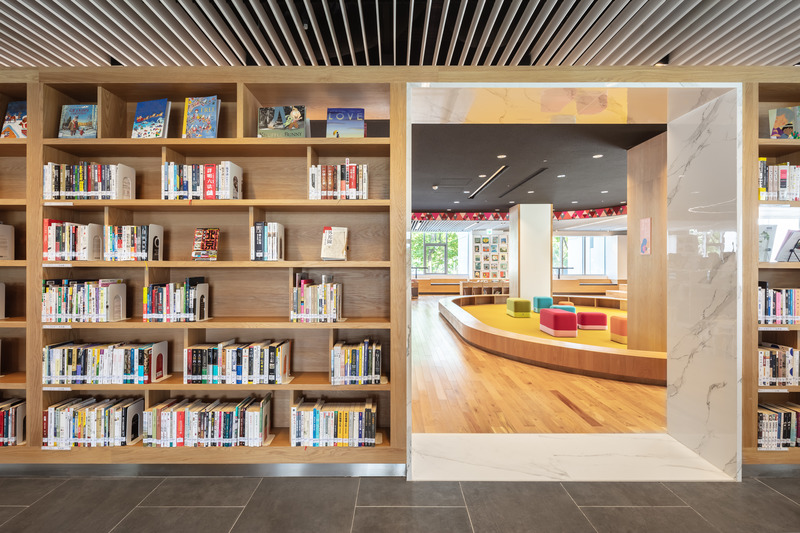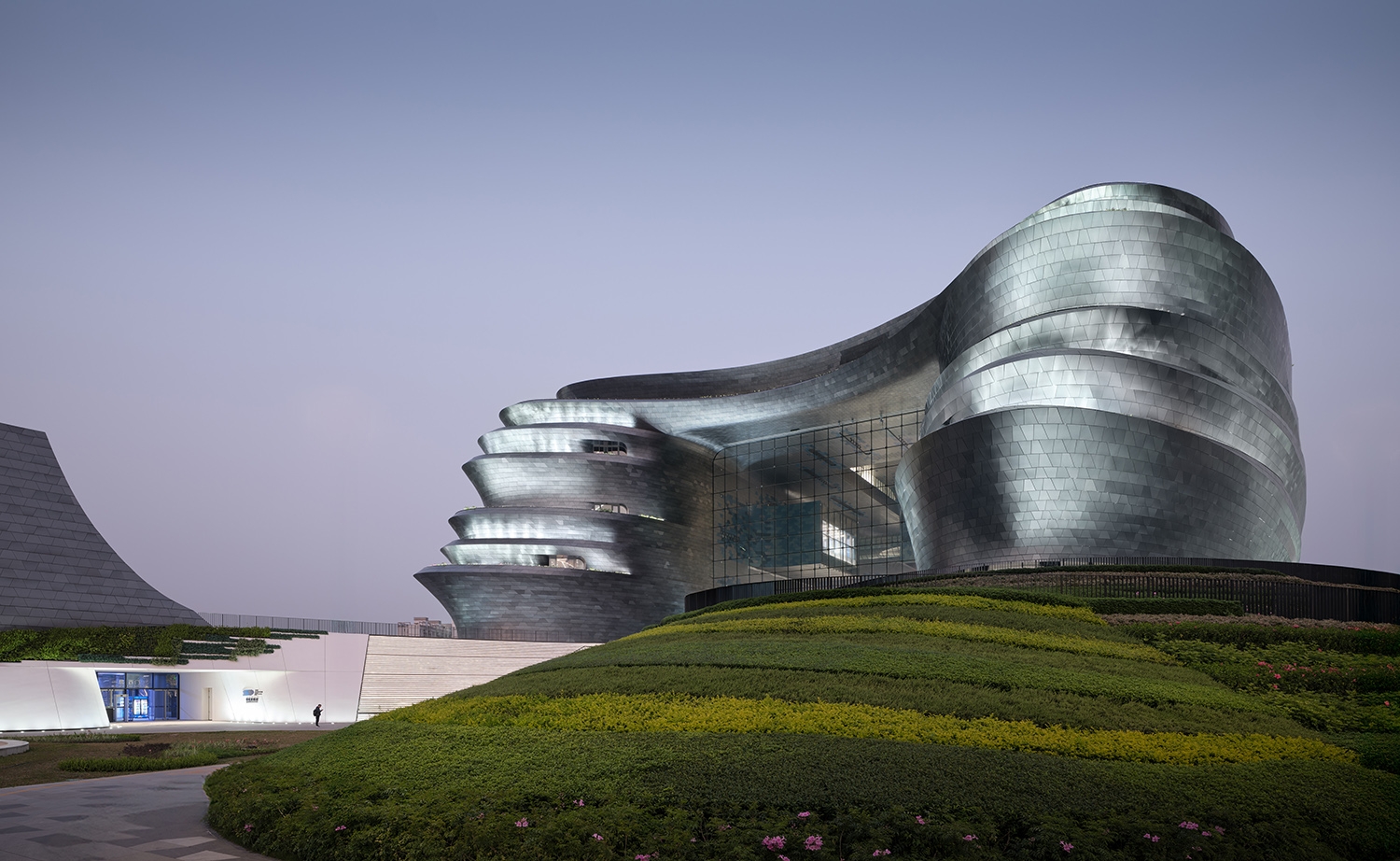The Pingtung Public Library is an extension and renovation project of an existing cultural center, originally built in 1983 and located in the middle of the Millennium Park of Pingtung City. The main objective of the transformation is to introduce transparency and accessibility to the once hermetic building and its disoriented landscaping.

At urban scale, a transparent new lobby is proposed and attached to the western side of the existing building. It turns the architectural axis and approach 90 degree in order to make the library face the city directly. Instead of arriving through a series of formal boulevards and plazas, the new approach guides visitors through the forest and arcades before entering the library. Therefore, the architecture is more attuned to the physical and psychological conditions of contemporary library readers.
The new lobby consists of a parallelogram plan, and is supported by a continuous V-shaped steel structure. Several “activity Islands” are arranged, including a sunken seating area, a floating mezzanine, and a pair of suspended lanterns. The expanded glass curtain walls link the interior to the exterior, revealing the activities of the library to the city, and vice versa.

At architectural scale, by transforming the original entrance lobby into a wooden reading room, and its three levels of compact book storage into a bright, multi-functional atrium, the originally fragmented and congested building becomes fluid and identifiable. Two distinct staircases, one spiral and one stair-seating, complete the reader’s circulation path, while providing various seating types and opportunities along the journey. Taking advantage of surrounding park views, an open floor plan, and natural materiality, the library programming and furniture deployments can achieve individuality, flexibility, and a sense of intimacy that are important characteristics of contemporary libraries.

The exterior of the original structure is now clad in white aluminum panels and louvers. An arcade extends from the original entrance to function as an in-between space between the reading room and the lawn, which was transformed from the depleted entrance plaza. The new landscape design connects the library seamlessly to its surrounding park, inviting citizens to use this new public space regardless of their purpose.









